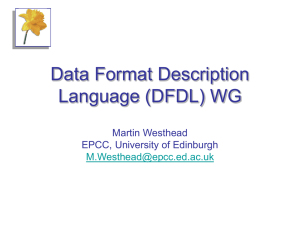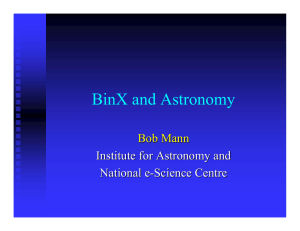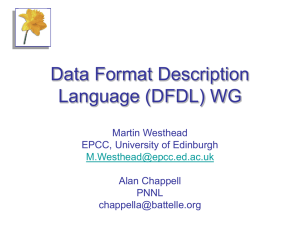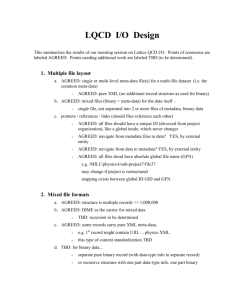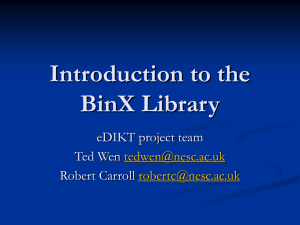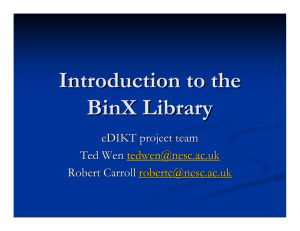Data formats in e-Science Two key requirements Two possible solutions: edikt
advertisement
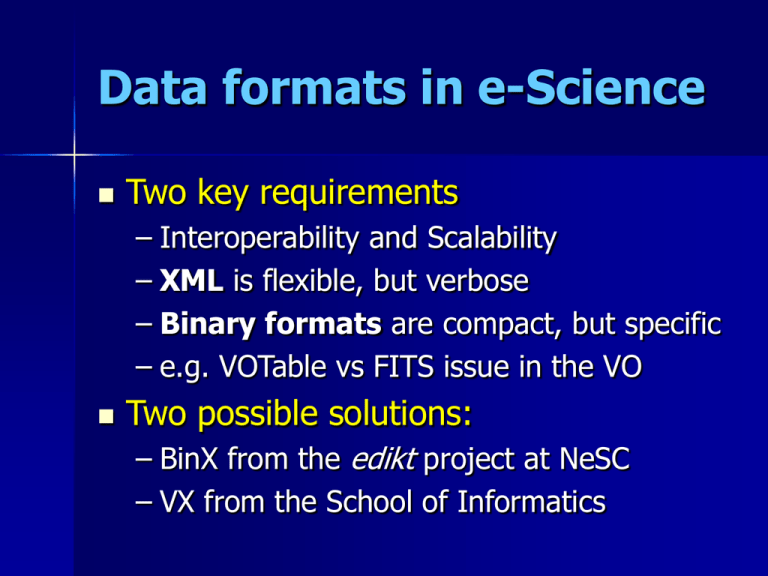
Data formats in e-Science Two key requirements – Interoperability and Scalability – XML is flexible, but verbose – Binary formats are compact, but specific – e.g. VOTable vs FITS issue in the VO Two possible solutions: – BinX from the edikt project at NeSC – VX from the School of Informatics BinX: Binary in XML A language: – Uses XML to describe the data types and structures in a binary data file A library: – For manipulating XML and binary files BinX files: – SchemaBinX: XML descriptor of binary file – DataBinX: SchemaBinX + data values BinX will allow you to interact with a binary file as if it were XML – e.g. run XPath queries Astronomical testbed: format conversion with BinX …and back again This way is harder, due to ASCII text in FITS header. More about BinX Download the BinX code & play with it – See www.edikt.org/binx After BinX comes DFDL (daffodil ) – Data Format Description Language – Developing through GGF Working Group – BinX might morph into a DFDL implementation Basic idea behind DFDL: – We can’t have a single data format, but we can have a single way of describing data formats VX: Vectorizing XML XML seems especially verbose for data files with simple, repeating structures – e.g. VOTable – lots of <TR>s and <TD>s Vectorize it: – Decompose the XML document into a skeleton describing the structure and vectors containing data values Example: bibliography in XML Astronomical VX application Export the PhotoObj Table from the SDSS EDR database into VOTable – 360 columns and 10,000,000 rows The Skeleton here is trivial Querying the decomposed XML version can be as fast as querying the SkyServer database – For queries where SkyServer doesn’t make heavy use of indexes, which are not in VX yet More: http://homepages.inf.ed.ac.uk/v1bchoi/paper.pdf
